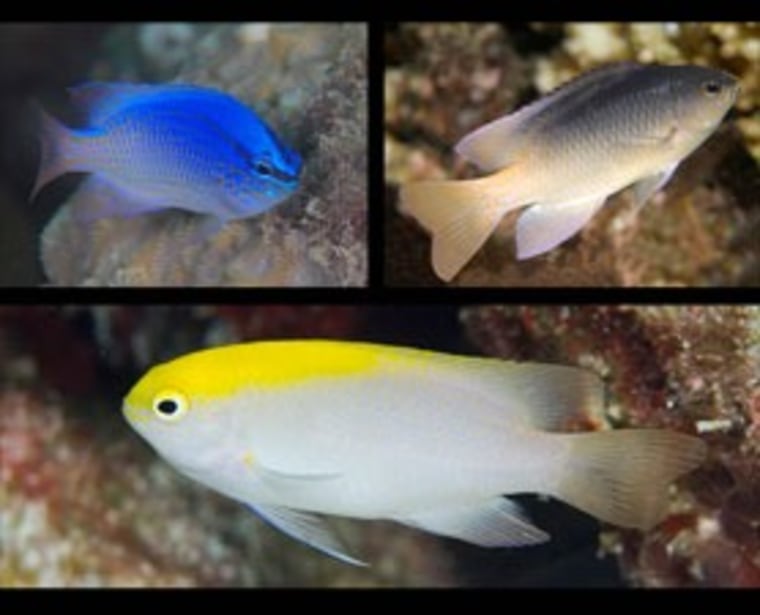The King demoiselle is not just one type of fish, but three distinct groups that recently split from each other, according to a new study.
By essentially catching one species in the process of turning into three, the study suggests that conservation efforts might be failing a variety of species that have yet to be identified.
"This work, along with others, is starting to show that there is a lot more biodiversity in the oceans then we previously thought," said Joshua Drew, a marine conservation biologist at the Field Museum of Natural History in Chicago. "We really are in a situation where we are losing things before we even know they exist."
The King demoiselle is a variety of damselfish that lives in the Indo — West Pacific, from the Solomon Islands to the Philippines and through central Indonesia. The area is known for its spectacular diversity, but the region also faces serious threats, including pollution, blast fishing, and oil spills from the shipping industry.
King demoiselles are common in shallow waters throughout the region's reefs. The fish are small -- about the size of a human thumb. And they come in a wide range of color patterns, from spotted blue to gray with a big yellow stripe.
Those color variations alone don't necessarily mean much. In plenty of reef species, individual fish can take on a huge variety of appearances. Juveniles often look different from adults. Males might look different from females. While doing other research in the field, though, Drew's colleagues noticed that groups of King demoiselles looked different in different geographical regions.
Wondering if there might be something genetic going on, the researchers sent about a dozen fish samples to Drew in Chicago. The samples were from three separate populations of fish in the South China Sea, the Philippines and Indonesia.
In his lab, Drew analyzed the samples for three genes — one that has evolved slowly, and two that have changed rapidly through time. His results showed a clear pattern: The genes that have changed quickly look different from one geographical group to the next, indicating that the groups only recently began to split.
"That means that this little fish we thought was broadly distributed has a mosaic of individual populations and each one is genetically distinct," said Drew, whose study has been accepted for publication in the journal Coral Reefs. "That highlights how little we really know about how biodiversity on Earth is distributed."
Even though fish are some of the most scrutinized creatures on Earth, the study points out that we still don't have a good idea of how many fish species there are, said marine biologist Brian Bowen, of the Hawaii Institute of Marine Biology in Kaneohe. In one of his own recent genetic studies, eight of the 15 Atlantic reef fish species he looked at turned out to be multiple species.
"For less well-studied groups, there are probably vast quantities of diversity we don't know and may never know about if we don't continue looking for them," Bowen said. "It indicates there are a lot of unknowns out there."
The findings add urgency to the search for new species and the need to protect coral reefs, Drew added.
For a long time, scientists thought that populations of reef fish like the King demoiselle would simply mix with each other across oceans, because their larvae are so small and so easily sloshed around by currents. Instead, this study and others now suggest that larvae tend to settle near where they were born.
In other words, many species of fish may have small geographic ranges, and destroying even one small section of reef could lead to extinctions. That could be bad news, considering recent research found that only 15 percent of reefs in the Indonesian archipelago are healthy today, Bowen said, compared with 30 percent a decade ago.
"While we're still figuring out the biodiversity," Bowen said, "their habitat is disappearing underneath them."
